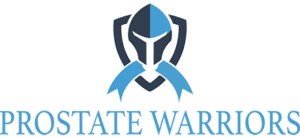Phase 1 trial: AVA6000 Targeted Chemotherapy for FAP-Positive Tumors (Including Prostate Cancer)
AVA6000 represents an innovative approach to cancer treatment, delivering the chemotherapy agent doxorubicin directly to tumors with high Fibroblast Activation Protein (FAP) activity. By leveraging FAP’s tumor-specific presence, this peptide drug conjugate (PDC) minimizes systemic exposure, reducing side effects while concentrating the drug in the tumor microenvironment (TME). The Phase I trial, currently underway and recruiting, has shown promising safety and efficacy results, making AVA6000 a potential game-changer for FAP-positive cancers.
AVA6000 is a prodrug, a medication that remains inactive until it is metabolized into its active form within the body. In this case, the pre|CISION™ peptide linker ensures that doxorubicin remains inactive in circulation, becoming active only when cleaved by FAP enzymes in the TME. This approach enhances precision and minimizes the toxic effects commonly associated with chemotherapy.
Studies indicate that FAP is present in the tumor microenvironment of approximately 50%-80% of prostate cancers, particularly in more advanced and aggressive forms.
Early findings
- Targeted Activation: AVA6000 is activated by FAP enzymes in the TME, releasing high concentrations of doxorubicin directly at the tumor site. Biopsy data showed tumor doxorubicin concentrations of 860 ng/gm, compared to only 8.3 ng/ml in plasma.
- Safety Profile: The drug demonstrated a favorable safety profile, with common side effects such as fatigue (50%) and alopecia (42.5%). Severe toxicities, such as cardiac failure and grade 4 neutropenia, were rare.
- Patient Population: The trial enrolled 40 patients with advanced or metastatic FAP-positive tumors, including sarcomas, colorectal, and pancreatic cancers.
- Efficacy:
- A patient with undifferentiated pleomorphic sarcoma experienced a 65% tumor reduction lasting 6 months (partial response).
- A patient with angiosarcoma achieved a 22% tumor size reduction (mixed response).
- The disease control rate was 50% at 12 weeks, correlating with high FAP activity in tumors.
Note: I could find no data about prostate cancer patients enrolled (till April 2024)
